|
|
ADDRESS AT THE FEDERATION OF ANDHRA PRADESH CHAMBERS OF COMMERCE AND INDUSTRY(FAPCCI), HYDERABAD
10-06-2006 : Hyderabad
FAPCC : Partners in National Development
I am indeed delighted to address and interact with the members of the Federation of Andhra Pradesh Chambers of Commerce and Industry (FAPCCI) in this beautiful city of Hyderabad. My greetings to the organizers, all the members of FAPCCI, industry captains and the distinguished invitees.
Bio-diesel Conference
Yesterday and today, I had a Conference on Bio-diesel towards Energy Independence at Rashtrapati Nilayam, Secunderabad. About 100 delegates participated in this conference and discussed various issues, pertaining to Bio-diesel cultivation to esterification and marketing leading to evolving a National Bio-diesel action plan for progressive production of Bio-diesel in the country. I am sure Andhra Pradesh can definitely take a major lead in this mission. I understand a Bio-diesel company called Naturol is planning to produce 100,000 tonnes per annum from 2007 onwards through the use of Palm oil and other oil seeds till the Jatropha is grown and comes into production. This should definitely lead to large scale production of Jatropha in the state by the farmers. Members of FAPCCI can definitely take urgent action for enabling the farmers in the state to take up this bio-diesel mission. In addition, they can consider establishment of small, medium bio-diesel production enterprises in the PURA clusters for brining about self reliance in the energy in the transportation sector and also it will provide employment opportunities for the rural community.
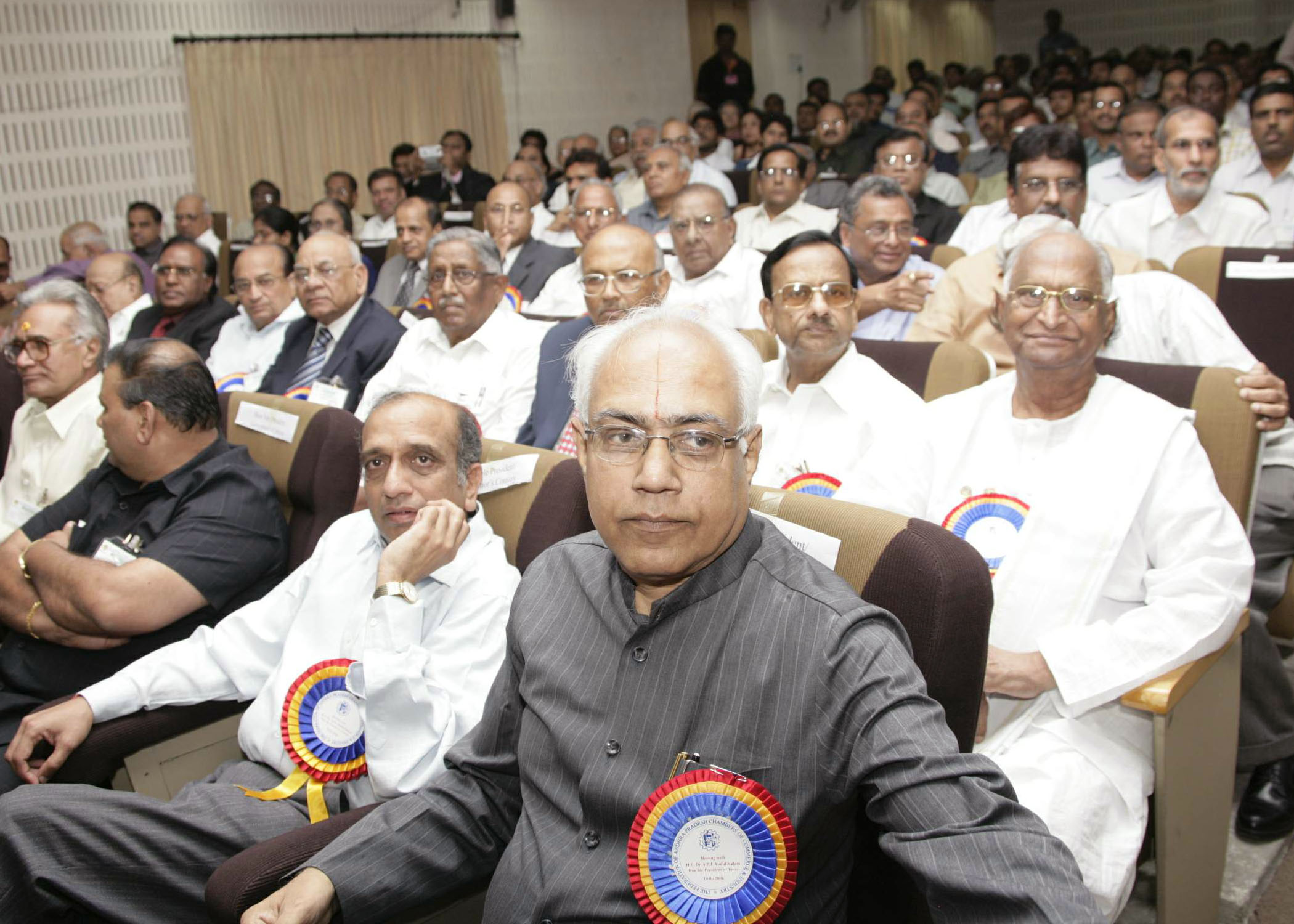

Ambience in the Nation
In the Indian history, very rarely our nation has come across a situation, all at a time, an ascending economic trajectory, continuously rising foreign exchange reserve, reduced rate of inflation, global recognition of the technological competence, energy of 540 million youth, umbilical connectivities of 20 million people of Indian origin in various parts of the planet, and the interest shown by many developed countries to invest in our engineers and scientists including setting up of new R&D centers in our country. Above all, India as the largest democracy in the world, has a reputation for its democracy and for providing leadership for the one billion people with multi-cultural, multi-language and multi-religious backgrounds. And also our technological competence and value systems with civilizational heritage are highly respected. Also, foreign investors find investing in India attractive. But we have a long way to go. We have to streamline our procedures and work towards a single window clearance system to attract foreign investment in a big way. Indians are also investing abroad and open new business ventures. The Government is committed to economic development by ensuring growth rate of 8% to 10% annually and maintaining it for a decade, for enhancing the welfare of the farmers and workers by unleashing the creativity of the entrepreneurs, business persons, scientists, engineers, youth and other productive forces of the society. Let us look at our national development challenges. (i) 40 to 50 million people need productive employment (ii) 260 million people live below poverty line (iii) 600 thousand villages where our 700 million people live, need physical, electronic and knowledge connectivity leading to economic connectivity. To meet the challenges, I will be discussing our national mission and PURA (Providing Urban Amenities in Rural Areas), in conjunction with Bharat Nirman Programme.
When I study the sectoral growth rate of our economy, I find that both manufacturing and services sectors are showing robust growth whereas the agriculture is substantially lagging behind. To raise the agricultural growth to over 4% which is vital for increasing the overall GDP growth to 10% we may have to resort to farm management based approach which will provide the newer technologies to the farming community. Also, we have to invest in agro-food processing so that the farmer gets the benefit for higher yield from his farm through value addition to his produce. A study of the composition of State Bank of India loan book indicates that the loan for agriculture is static at 10%. Hence, there is a need to increase the loan allocation to the agricultural sector along with technological and managerial inputs which will enable us to enhance the growth of this sector over 4% in a time bound manner. Simultaneously, the banks have to become pro-active venture capitalists who can take risks and facilitate development of innovative products suiting to rural needs through creative entrepreneurs. This shift in emphasis is essential for enabling faster growth of Indian economy.
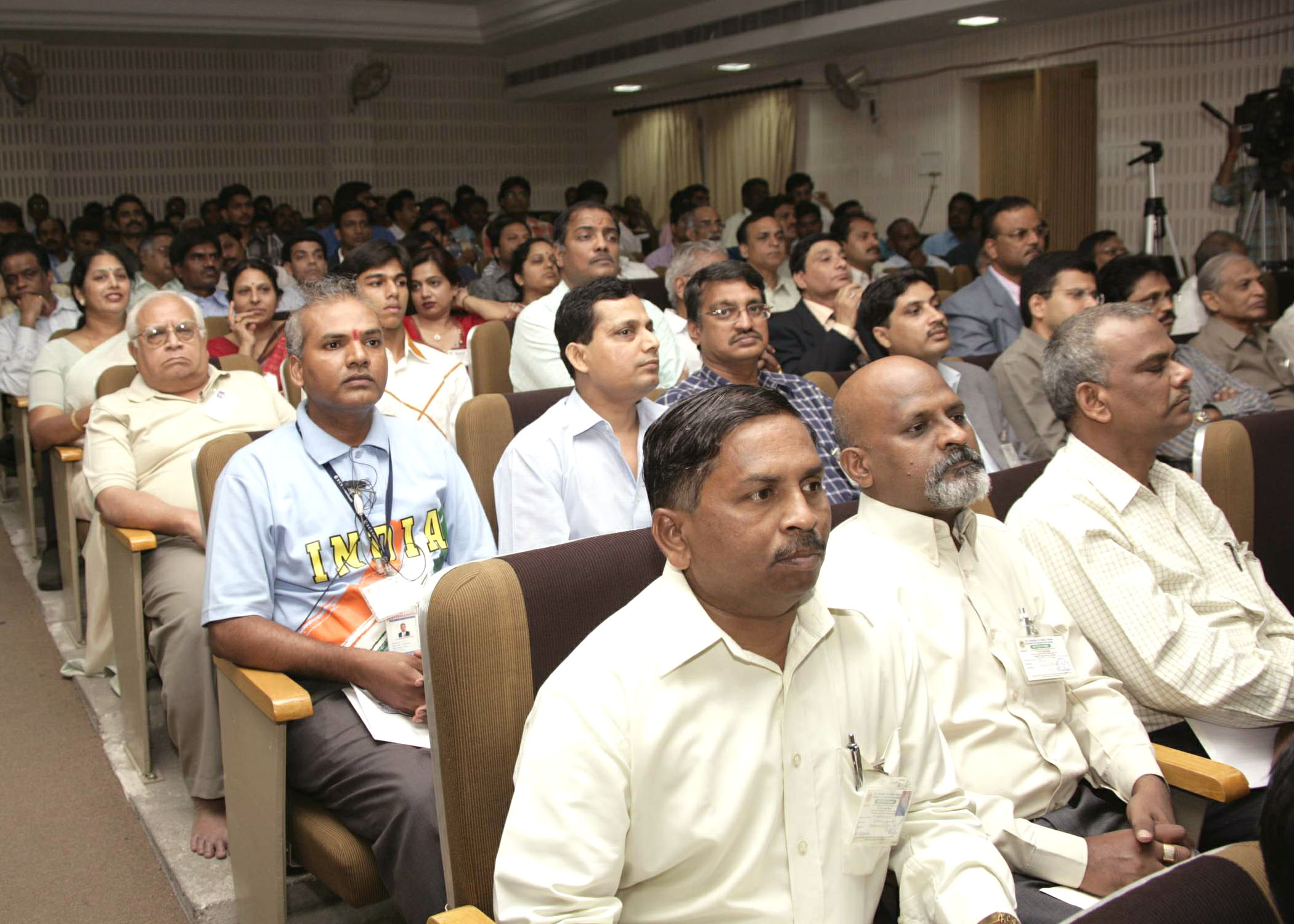

Societal transformation
Societal transformation and economic growth are interlinked. Knowledge Societies enrich information society through innovation. Information society enriches agriculture and manufacturing through value addition. The whole purpose of education in a country is to develop and enhance the potential of our human resource and progressively transform it into a knowledge society. The knowledge society will be a society producing products and services that are rich in both explicit and tacit knowledge, thus creating value added products. The real capital of this knowledge society will be its knowledge components. The society will be highly networked to create knowledge intensive environment along with enabling process to efficiently create, share, use and protect knowledge. Our education system should re-align itself at the earliest to meet the needs of the present day challenges and be fully geared to participate in the societal transformation.
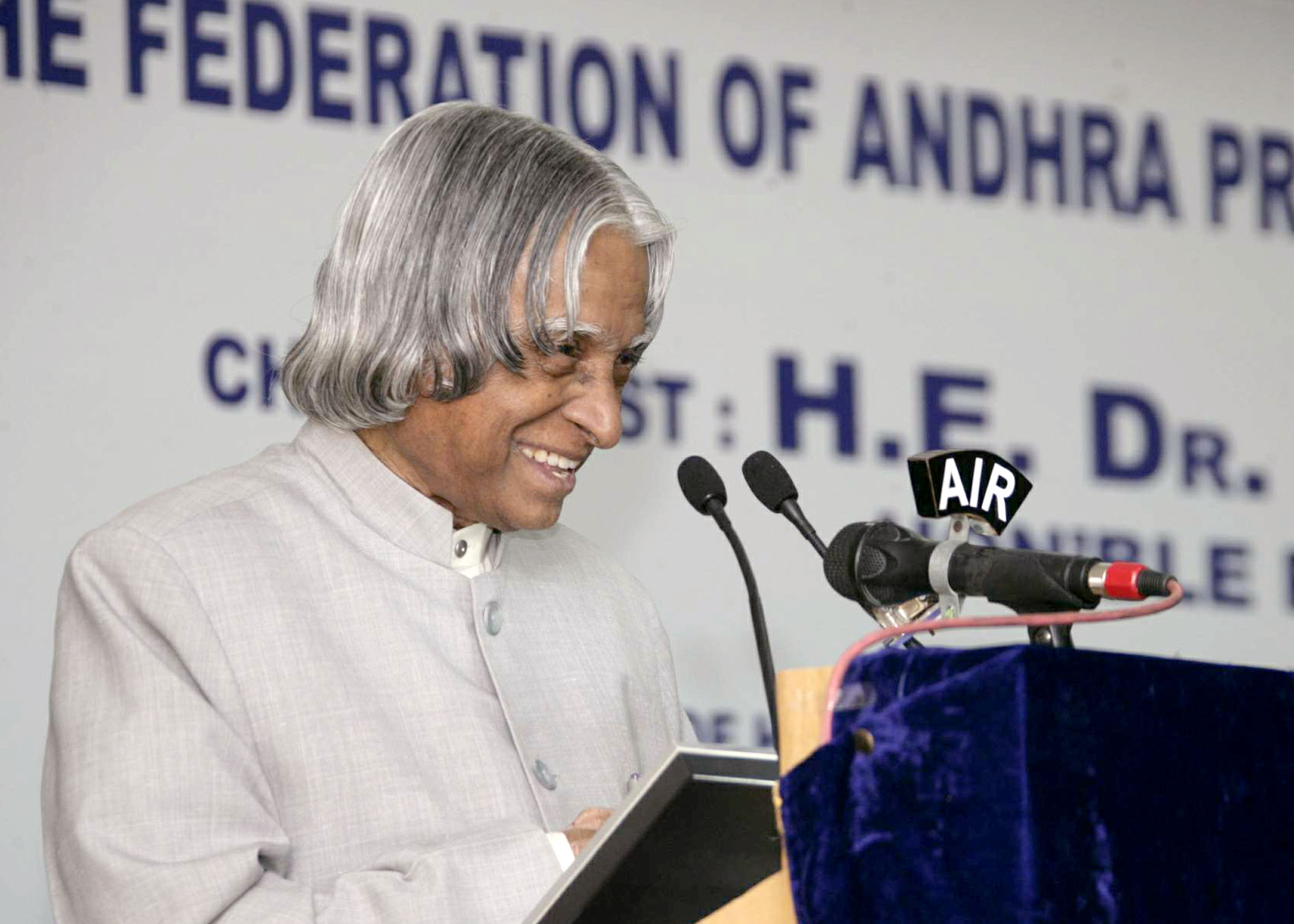

Our National Mission - Challenges
For transforming India into a developed nation and bring prosperity to all the one billion plus people, we have identified five areas where India has core competencies for integrated action: (1) Agriculture and food processing (2) Education and Healthcare (3) Information and Communication Technology (4) Infrastructure for all parts of the country such as reliable and quality electric power and surface and air transport and (5) Self-reliance in Strategic sectors. These five areas are closely inter-related and when effectively addressed, would lead to food, economic, energy and national security and lead to sustainable prosperity.

The Mission of PURA
One of the important components of national development is the creation of PURAs (Providing Urban Amenities in Rural Areas). PURA envisages integrated connectivities to bring prosperity to rural India. These are - physical connectivity of the village clusters through quality roads and transport; electronic connectivity through tele-communication with high bandwidth fiber optic cables reaching the rural areas from urban cities and through internet kiosks; and knowledge connectivity through education, vocational training for farmers, artisans and craftsmen and entrepreneurship programmes. These three connectives will lead to economic connectivity through starting of enterprises with the help of banks, micro credits and marketing of the products.
Each PURA cluster will connect about 20 villages depending upon the region and population and will cost about Rs.100 crores. After initial short-term employment during construction etc., we have to plan for initiating actions for providing regular employment and self employment opportunities in nationally and internationally competitive enterprises in agro processing, manufacturing and services sectors for about 3,000 people. If the industrial/business parks are marketed well, they can generate employment opportunities in support sector for about 10,000 people for a village complex having 30,000 people. This will provide sustainable economy for the rural sector. The total number of PURAs for the whole country will be around 7,000.
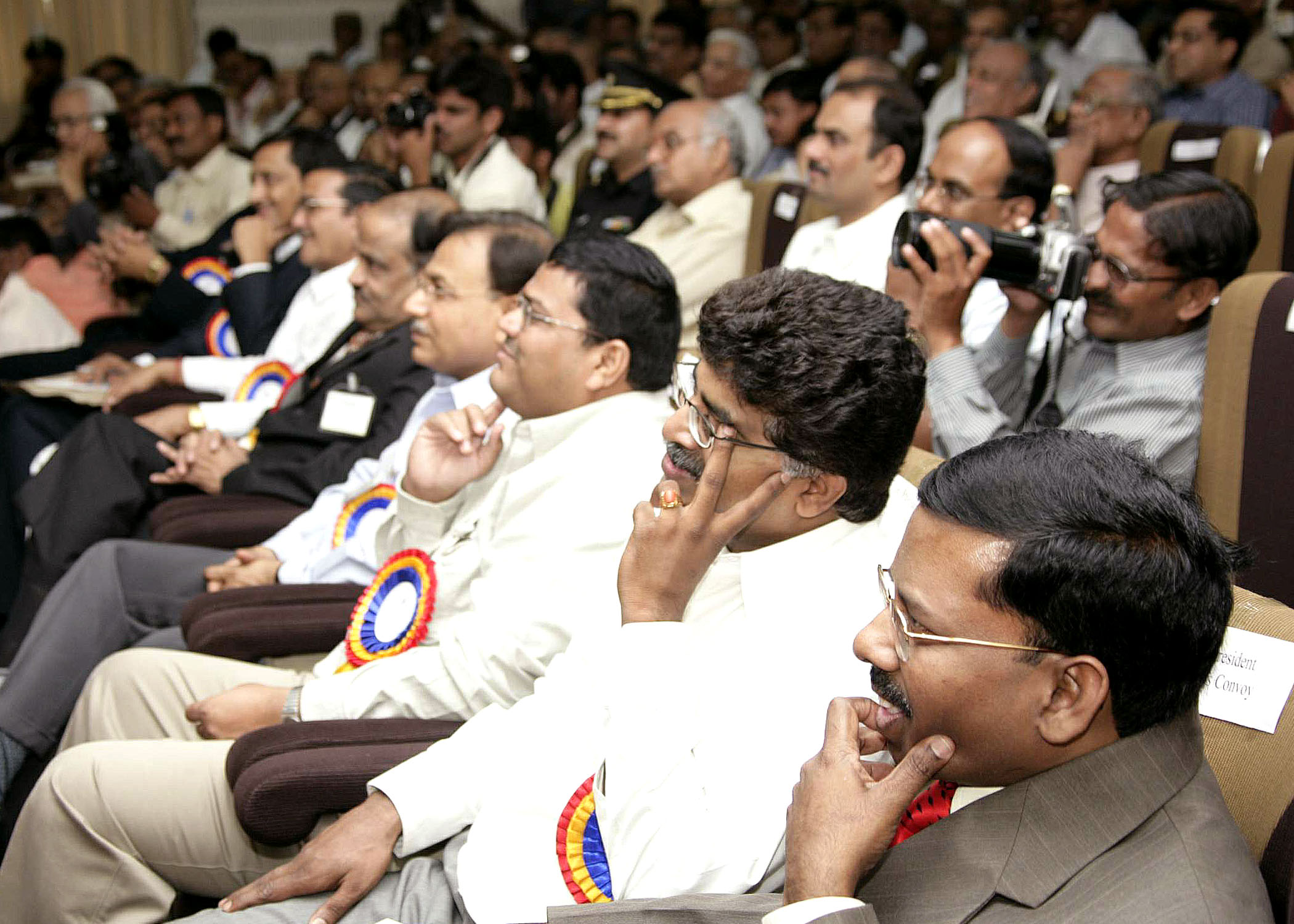
We must realize Bharat Nirman Programme, with an allocation of Rs. 1,74,000 crores for the duration of four years and Rural Employment Guarantee Scheme for 200 districts of the nation ensures availability of adequate funding support for Rural Development Missions.
In this national mission, FAPCCI can promote entrepreneurs in the rural areas particularly in setting up of agro-food processing industries as co-operative institutions based on the core competence of the region. FAPCCI can also promote venture capital enterprises for generating the rural technology needed for the innovative rural enterprises. This will facilitate creation of large scale employment in the rural areas leading to the removal of urban-rural divide.
I have visited a number of industries in the Agriculture, Services and Manufacturing sectors. Based on these visits and the growing urge in our rural areas for creation of PURA as a business proposition I would suggest creation of rural enterprises in the following areas:

Bio-products from Seaweed
Scientists of Central Salt and Marine Chemicals Research Institute (CSMCRI), Bhavnagar have developed an important thickening agent Carrageenan using seaweed called Kappa-phycus al-vare-zii that bestows useful properties to many commercial products such as toothpaste, ice-cream, pet food and soft capsules. The scientists have developed a unique technology of liquefying the seaweed without adding any water and thereafter they have separated the solid from the liquid to obtain two products. The solid is the source of car-ra-gee-nan and the liquid has been found to be a very useful plant nutrient rich in potassium and organic growth promoting hormones. This sap has been used in a variety of crops such as sugarcane, paddy, maize, pulses and several fruits and vegetables. The productivity increase has been in the range of 20% to 40% in different regions for different plant varieties as per studies conducted by regional institutions. This highly innovative process of producing two useful products from the fresh harvest of the seaweed is being done for the first time in the world.
I would suggest seaweed cultivation and value addition should be taken up as a mission mode project of fishermen co-operatives and self-help groups of the coastal areas of Andhra Pradesh, particularly in the PURA (Providing Urban Amenities in Rural Areas) complexes in partnership with scientists, industrialists and FAPCCI. This will enable creation of industries for producing Car-ra-gee-nan and bio-fertilizer in the coastal PURA itself resulting in substantial amount of revenue increase to the fishermen and farmer.
Since Andhra Pradesh produce large amount of cotton, farmers certainly need value addition to increase earning capacity in the textile sector. I strongly feel FAPCCI has a major and responsible role to play in creating a facilitating atmosphere for the creation of total value chain from cotton to Apparel Park.
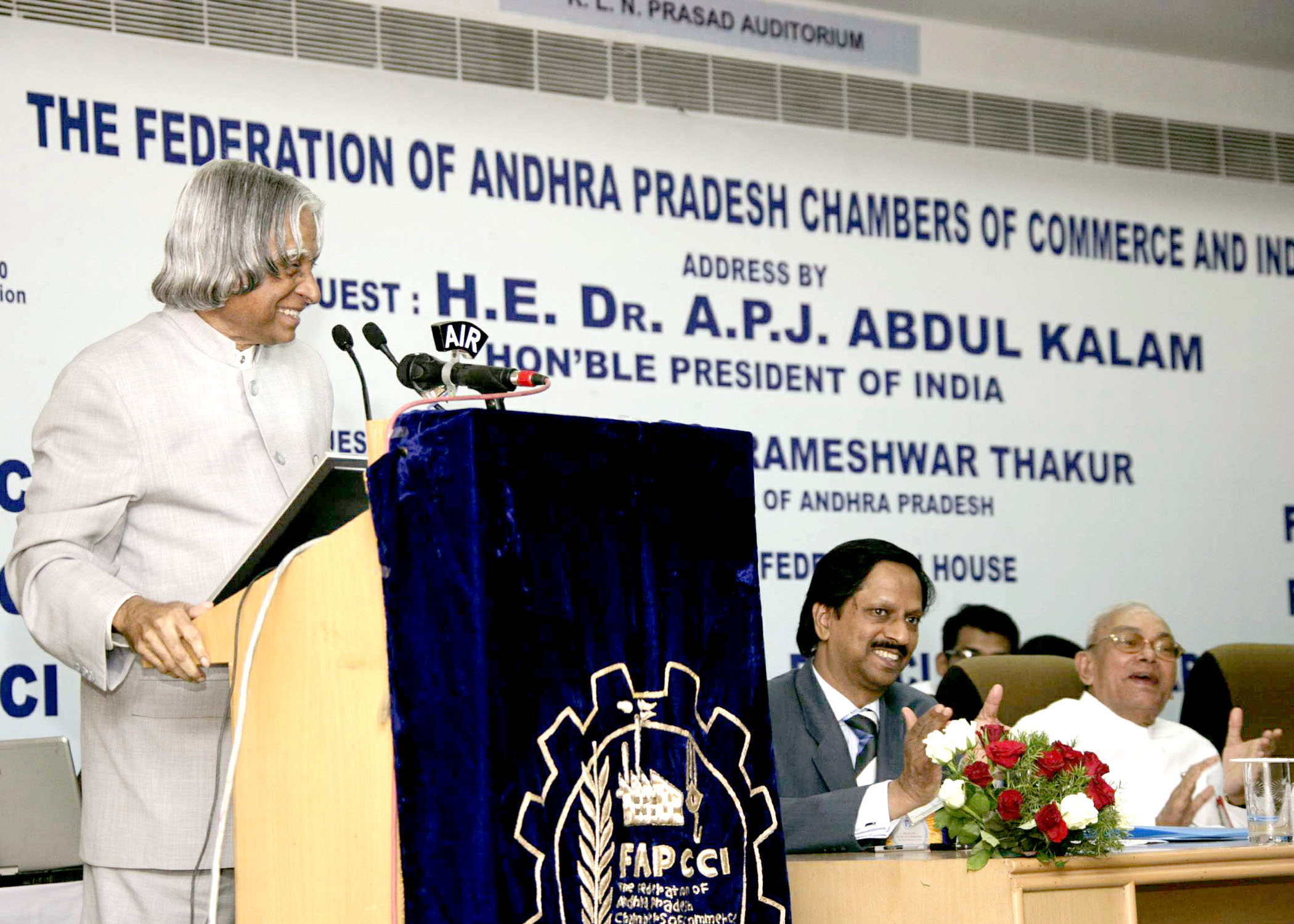
Textile industry: Textile industry is very important for the Indian economy. The basic raw material is cotton. India is the third largest producer of cotton in the world. However, compared to the world average of 700 kgs of seed cotton per acre, we produce only 350 kgs of seed cotton per acre. It is indeed a technological concern for the nation. Some of the industries have adopted certain villages in Punjab, which has brought out a cooperative movement of the farmers, scientists, trainers and the industry and launched for cultivating cotton in over 1200 acres. A training programme was launched for farmers starting with soil characterization, matching the cottonseed to soil, water and fertilizer management.
The project resulted in increasing the average seed cotton yield of the village from 450 KG per acre to 950 KG per acre. This led to the seven-fold increase in net return per acre, due to considerable reduction in input costs. It is worth noting that in this case the yield is above the world average. This model has already been replicated in twenty five villages in Punjab. The revenue increase due to higher production in these twenty-five villages is around Rs. 20 crore. Certainly many cotton-growing regions of the country can emulate this model. India can definitely produce 25% of the total world production of quality cotton compared to the existing 12% leading to revenue of over Rs. 25000 crores a year for the nation.
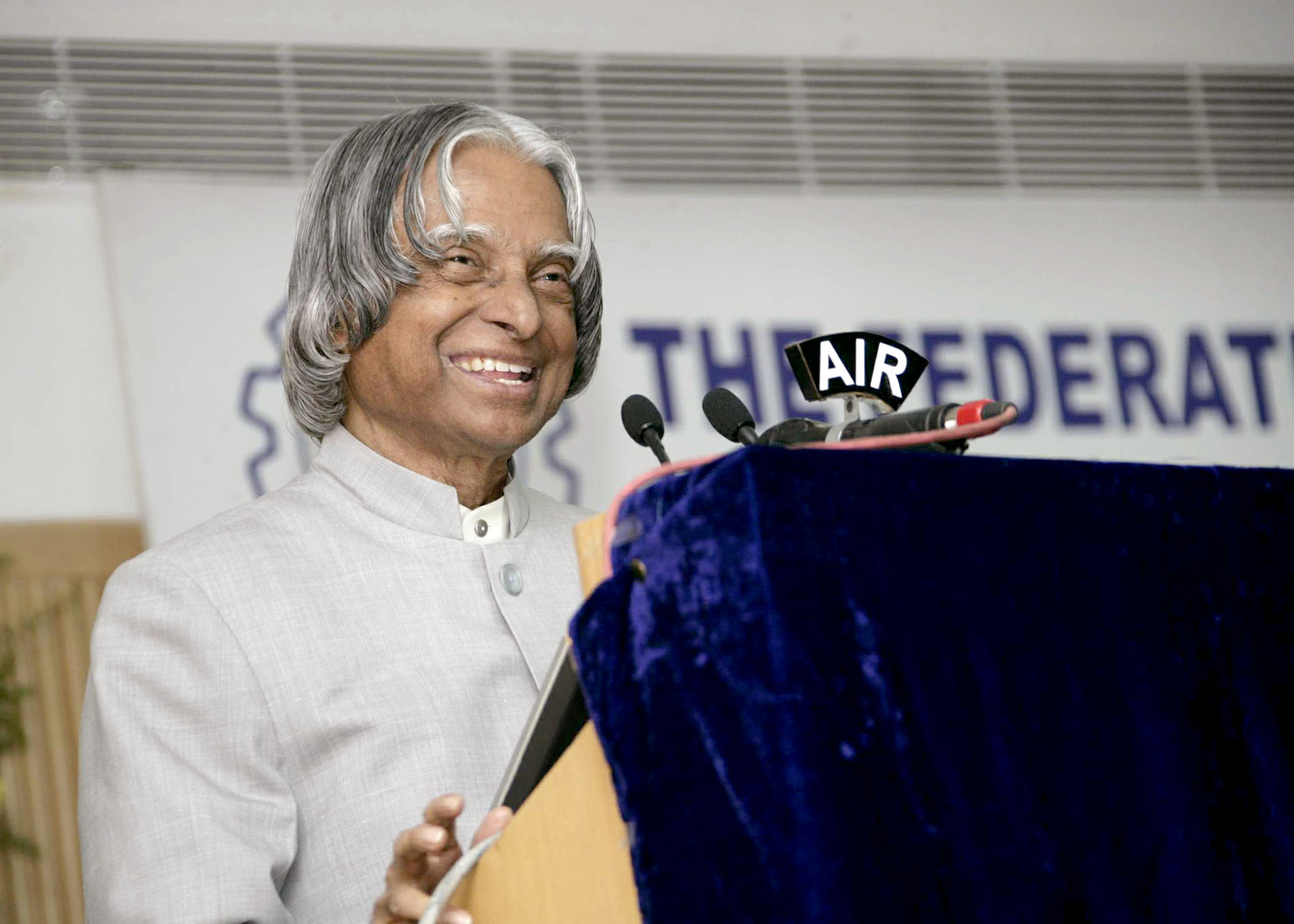
I would like to link cotton production to garment export business, which is a low investment and large volume employment generator. India is presently, exporting six billion dollars worth of garments, whereas with the WTO regime in place, we can increase the production and export of garments to 18 to 20 billion dollars within the next five years. This will enable, generation of employment in general and in rural areas in particular. By tripling the export of apparels, we can add more than 5 million direct jobs and 7 million indirect jobs in allied sector, primarily in the cultivation of cotton. Concerted effort is needed in Cotton research, technology generation, transfer of technology, modernization and upgrading of ginning and pressing factories and aggressive marketing strategy. This model can be studied by FAPCCI and adopt the villages which are in the dire need of increasing the cotton productivity leading to creation Apparel Parks in each districts in PURA Clusters.
The area, where AP can focus is the Fly Ash, since there are many thermal power plants operating in the state.
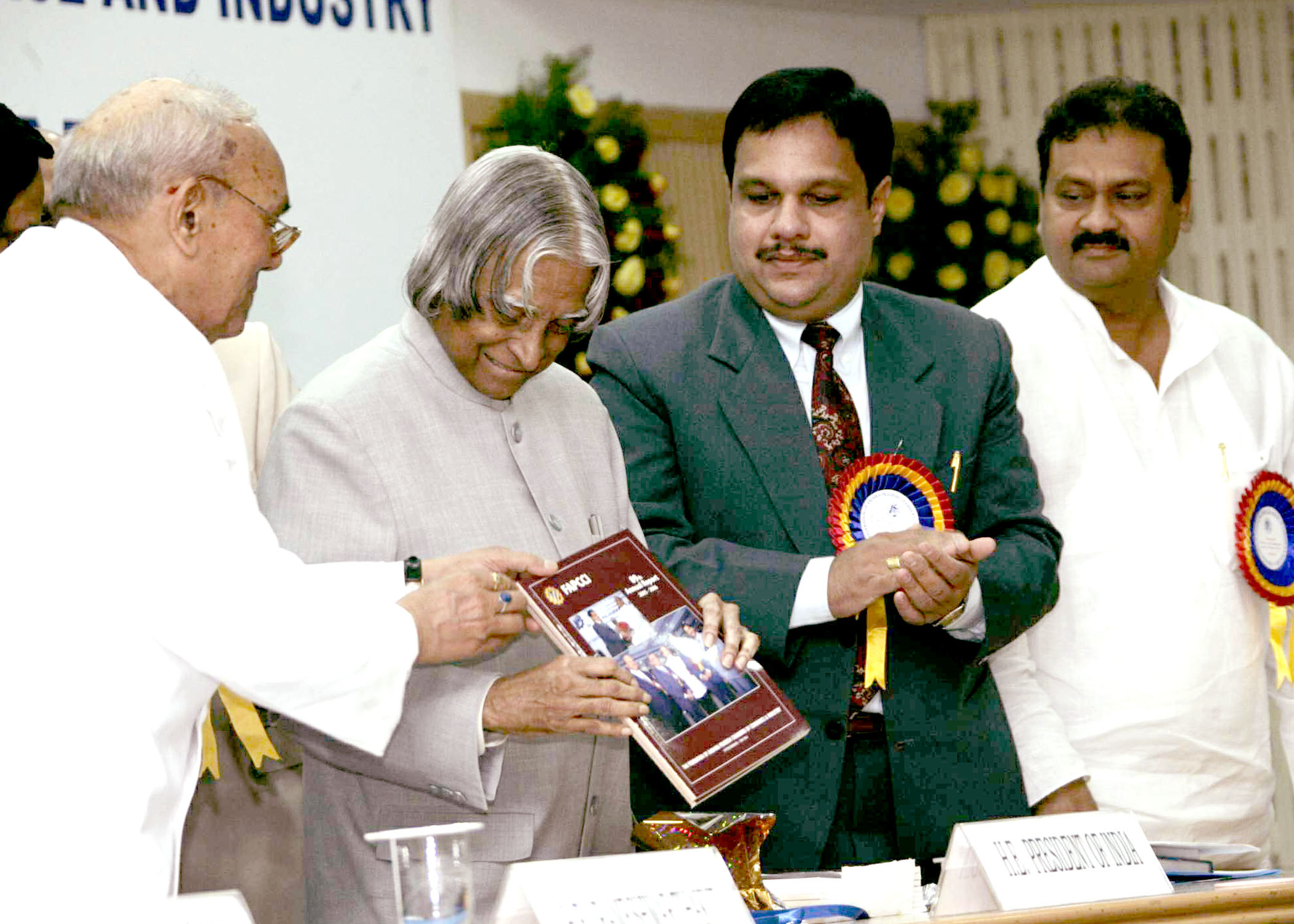

Converting the fly ash as Wealth Generator:
As you are aware, the use of coal for power generation results in increased quantum of fly ash production, which has reached about 100 million tonnes per year. All out efforts are needed to utilize this fly ash not only from environmental considerations, but also to avoid land usage for fly ash dumping. Though there has been a steady progress in fly ash utilization from 1990, we have a long way to go to reach the target of 100% fly ash utilization. It is reported that the agricultural increase of grains is around 15%, green vegetables 35% and root vegetables 50%, when fly ash is mixed with the soil. Toxicity tests have proved that there is no toxic element due to fly ash. But, it has higher nutrients due to increased availability of iron and calcium. The fly ash can become a wealth generator by making use of it for producing "green building" materials, road, agriculture etc. Presently, the fly ash utilization is in the range of 33 million tones per year and providing employment for over 50,000 personnel. For full utilization of the generating stock, will provide employment potential for three hundred thousand people and result in a business volume of over Rs. 4000 crore. Many PURA clusters located near the Thermal power plants can make use of fly ash as a business proposition. Certainly FAPCCI can take up a lead in this sector in collaboration with the local banks.

Global Human Resource leading to Knowledge society
In the coming years I visualize larger participation of Andhra Pradesh in the IT, ITES and BPO sectors. As per NASSCOM McKinsey Report-2005, the requirement of knowledge manpower in the IT sector by 2010 is expected to be over 9 million and in the support sector such as transportation, construction and retailing will be around 6.5 million. I visualize at least 1 million direct jobs on IT, ITES and BPO sectors and another 1 million jobs in construction, retail and transportation being occupied by Andhra Pradesh youth. For this, there is a need to carry out state-of-the-art, skill oriented sectoral training of the youth who have the necessary aptitude for such tasks. This is an important mission to be carried out by the FAPCCI in participation with NASSCOM and leading BPO companies located in Hyderabad, Vijayawada and Visakhapatnam. I have seen a working BPO in the rural environment near Bhimavaram, in Byrraju PURA, which has enabled reverse migration of education from Hyderabad. This model can be replicated in many other 2-tier cities in the PURA clusters of Andhra Pradesh.
Let us think together, what are the types of enriched partnerships possible between FAPCCI and Andhra Pradesh knowledge industry. Two distinct areas can be identified. They are, (i) Transforming India into knowledge society with innovation as the thrust area influencing the information society, industrial society and agricultural society. (ii) As you are aware India has 540 million youth below 25 years which is an important asset for the planet Earth. This dynamic resource will have two components. One, at the secondary education level supplemented with high quality vocational skills and the other at the university level. Knowledge workers will come out of this Global Human Resource Cadre. Definitely, FAPCCI can participate in the evolution of trained human cadre.

Economic development and prosperity
Now I would like to talk to you about the growth of the economic development and prosperity.
- Nations Economic development is powered by competitiveness.
- The competitiveness is powered by knowledge power.
- The knowledge power is powered by Technology and innovation.
- The Technology and innovation is powered by resource investment.
- The Resource investment is powered by revenue and return on Investment.
- The Revenue is powered by Volume and repeat sales through customer loyalty.
- The customer loyalty is powered by Quality and value of products.
- Quality and value of products is powered by Employee Productivity and innovation.
- The Employee Productivity is powered by Employee Loyalty, employee satisfaction and working environment.
- The Working Environment is powered by management stewardship.
- Management stewardship is powered by Creative leadership.

Conclusion: Creative Leadership
For success in all projects we need creative leaders. Creative leadership means exercising the vision to change the traditional role from the commander to the coach, manager to mentor, from director to delegator and from one who demands respect to one who facilitates self respect. For a prosperous and developed Andhra Pradesh, the important thrust will be on the growth in the number of creative leaders and innovative organizations who can create wealth through dedicated entrepreneurship.
My best wishes to all the members of FAPCCI and captains of industries in their mission of making Andhra Pradesh one of the top States in all sectors of the economy.
May God bless you.
<<Back
|
|